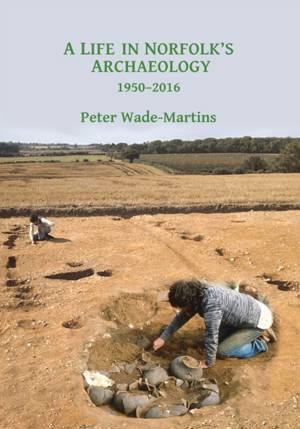
- Afhalen na 1 uur in een winkel met voorraad
- Gratis thuislevering in België vanaf € 30
- Ruim aanbod met 7 miljoen producten
- Afhalen na 1 uur in een winkel met voorraad
- Gratis thuislevering in België vanaf € 30
- Ruim aanbod met 7 miljoen producten
Zoeken
A Life in Norfolk's Archaeology
1950-2016: Archaeology in an Arable Landscape
Peter Wade-Martins
Hardcover | Engels
€ 33,95
+ 67 punten
Omschrijving
This is a history of archaeological endeavour in Norfolk set within a national context. It covers the writer's early experiences as a volunteer, the rise of field archaeology as a profession and efforts to conserve the archaeological heritage against the tide of destruction prevalent in the countryside up to the 1980s when there was not even a right of access to record sites before they were lost. Now developers often have to pay for an excavation before they can obtain planning consent. The book features progress with archaeology conservation as well as the growth of rescue archaeology as a profession both in towns and in the countryside. Many of the most important discoveries made by aerial photography, rescue excavations and metal detecting from the 1970s onwards are illustrated. The last section covers the recent growth of the Norfolk Archaeological Trust as an owner of some of the most iconic rural sites in Norfolk. The book concludes with a discussion of some issues facing British field archaeology today.
Specificaties
Betrokkenen
- Auteur(s):
- Uitgeverij:
Inhoud
- Aantal bladzijden:
- 404
- Taal:
- Engels
Eigenschappen
- Productcode (EAN):
- 9781784916572
- Verschijningsdatum:
- 3/11/2017
- Uitvoering:
- Hardcover
- Formaat:
- Genaaid
- Afmetingen:
- 150 mm x 213 mm
- Gewicht:
- 975 g

Alleen bij Standaard Boekhandel
+ 67 punten op je klantenkaart van Standaard Boekhandel
Beoordelingen
We publiceren alleen reviews die voldoen aan de voorwaarden voor reviews. Bekijk onze voorwaarden voor reviews.








